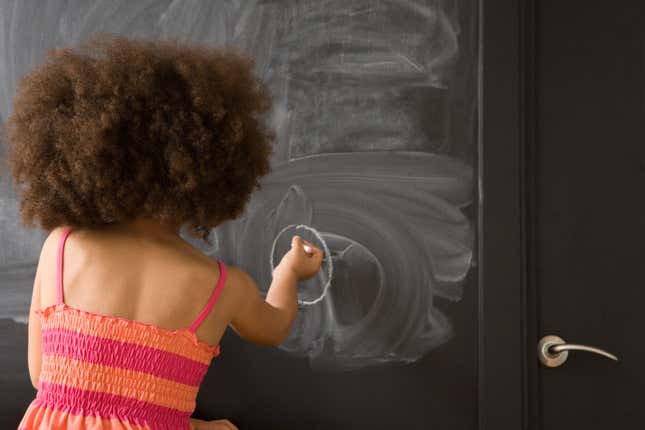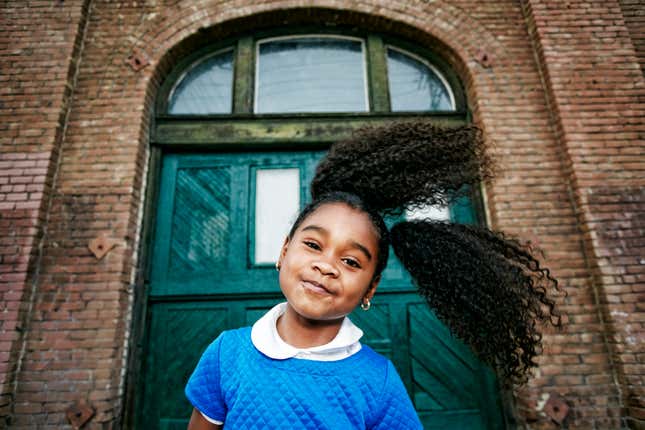New Study on Black Hair Discrimination Proves What We’ve Been Trying to Make Clear for Decades
Black girls are still being discriminated against for their natural hair in schools.
Entertainment

Khloe Jules is a mixed race Black girl who lives in France, and she has a gorgeously coiled afro. She was just 4 years old when she came home from school crying after the white kids bullied her and called her curly 4c textured hair “ugly.” Naturally, Khloe was ashamed to return to school.
This was so disturbing for Khloe’s Caribbean/St. Barths family that her older sister, St. Clair Detrick Jules, who lives in DC, interviewed hundreds of women and asked them to share similar experiences in personal heartfelt letters to Khloe. St. Clair compiled their gripping stories over the course of two years and published them in an award-winning book, called My Beautiful Black Hair: 101 Hair Stories From the Sisterhood. Women from all over the U.S. and abroad joined in with shared feelings of frustration and the need for liberation from eurocentric ideals of beauty. This experience is an everyday occurrence for Black women and girls, and for Detrick-Jules, the mission for natural hair appreciation was decades in the making. “I wanted to her to stop seeing her through the eyes of the racist white kids, and see herself through the eyes of her community,” the author told me.
Just a year earlier, in 2016, Solange released the iconic video for her song, “Don’t Touch my Hair,” wherein the songstress is seen in an array of hairstyles from braids to a curls to an afro to a looped braided crown and says, “Don’t touch my hair/When it’s the feelings I wear/Don’t touch my soul/When it’s the rhythm I know/ Don’t touch my crown/They say the vision I’ve found.”
That pivotal moment finally gave Black women, who’ve lived through decades of hair discrimination, the language to speak about our hair, as well as the empowerment to demand that white people not touch it. The nonconsensual touching of our hair is a form of micro-aggression and fetishization that has become such a common experience for women of color, in which navigating white spaces becomes a minefield.
It seems as though every generation needs another Solange anthem— something to give them authority to reject white people’s assumed entitlement to our hair. It seems that every day, our peers, authority figures, media, and the entertainment industry find new ways to tell young Black girls that not only is Black hair unattractive, but others are entitled to take and destroy it. Detrick-Jules writes in her book,
-

-

-

-

-

-

-

-

-

-

-

-

-

-

-

-

-

-

-

-

-

-

-

-

-

-

-

-

-

-

-

-

-

-

-

-

-

-

-

-









































